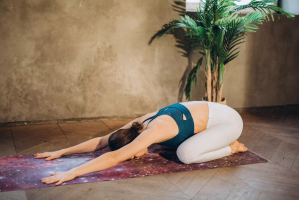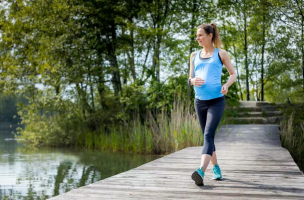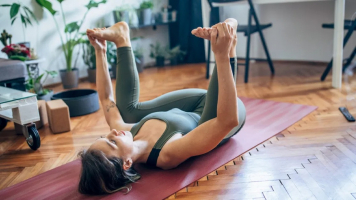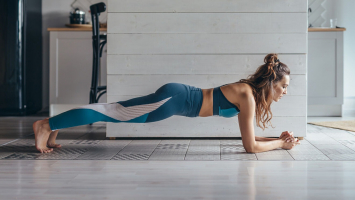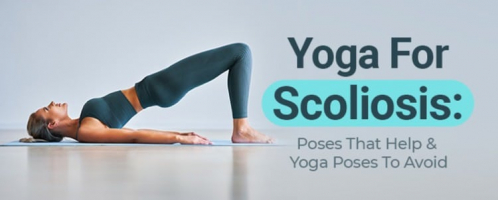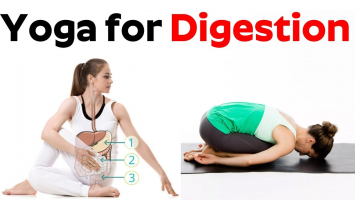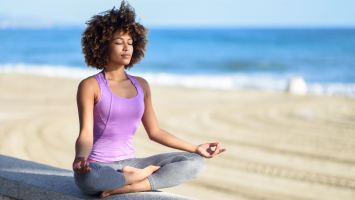Top 7 Standing Yoga Poses to Improve Your Balance
As people age, balance improves overall health. Not only does balance help from tumbles that can cause broken bones and possible head injuries but a lack of ... read more...balance tends to cause a lack of activity. Inactivity can create a downward spiral of not only injuries but health-related conditions. Additionally, working on balance can help athletes perform better and help with regular to day to day activities such as lifting packages and walking on uneven surfaces. Practicing yoga asana can help improve flexibility and strength but can greatly improve physical balance. So you should do some standing yoga poses to improve your balance.
-
The basis of all standing yoga poses to improve your balance is the Mountain (Tadasana). When done correctly, the stance has several advantages, including increased balance, better posture, stronger legs, a toned upper body, and a decrease in flat feet. It may foster a feeling of courage and a strong physical foundation.
All subsequent postures might benefit from the principles of this straightforward yet potent pose. Focus on the way the body is being held, the way the weight is distributed between the feet, the muscles that are being used, and the body's sense of energy as you practice. The same essential components should be felt in the body while shifting between different standing positions. Depending on ancestry and individual skill, the stance can take on many different forms. The feet might be hip-distance apart or together with such that the big toes contact. The inside borders of the foot are parallel in both variants.
Try to evenly distribute weight between the balls and heels of the feet while pressing down to the sides while standing tall and observing the feet on the ground. Lift the thighs up toward the hip flexors to engage the thighs. To activate the Mula bandha, tuck the tailbone into the heels. Widen the collarbones while strengthening the upper body. Deep breathing will cause your chest to enlarge as you relax your shoulders. Give your jaw and the area between your eyebrows a chance to relax. As the legs dragged you down to the ground, lift the crown of your head toward the sky upward with the torso.
Hold the position steadily while taking deep breaths and developing balance in this basic yet essential posture.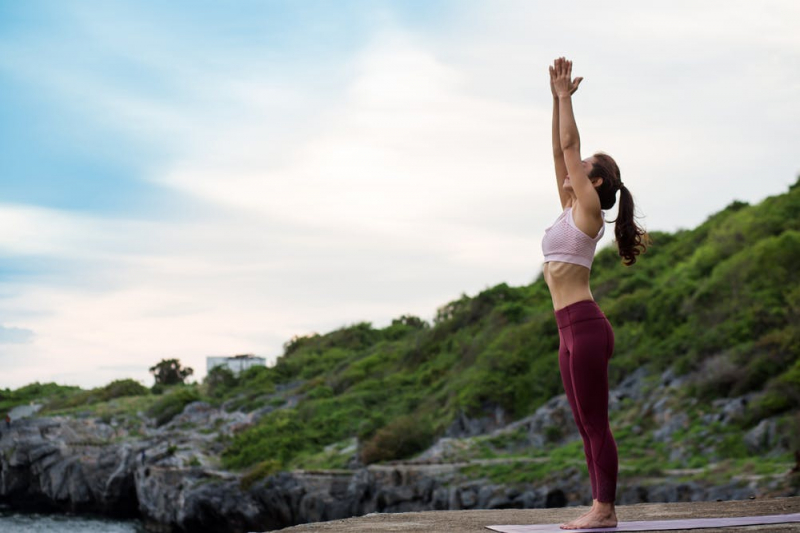
LEEP.APP 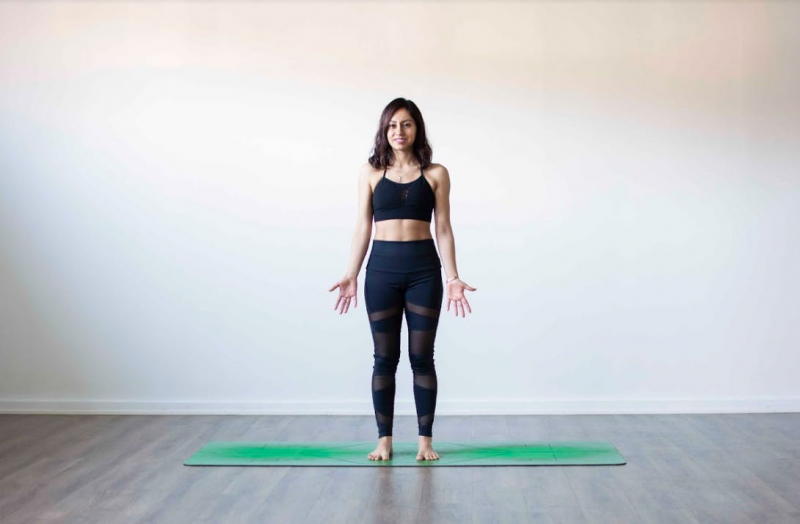
LEEP.APP -
All standing yoga poses and movements, including the Sun Salutation Sequence, start with the Upward Salute (Urdhva Hastasana Pose). The stance may appear straightforward, and initially, it is. But there are a lot of intricate details to explore here. The position gives you a chance to focus inward, take stock of your body, and discover alignment. The mountain position is a foundation for the upward salute. Additional advantages include expanding the abdomen, enhancing digestion, and perhaps lowering stress and anxiety.
The same principles that govern mountain posture also apply to the upward salute. The palms should first be rotated outward in the mountain stance before being raised upward. When the arms are raised, check to make sure they are parallel to one another before pressing your palms together over your head. Make sure the rib cage is lifting away from the pelvis without bulging forward as you cast your gaze upward.
Take your look ahead if your neck is bothering you. If the palms are unable to press together at the top, separate the hands while lifting, keeping them in line with shoulders that are parallel to one another.
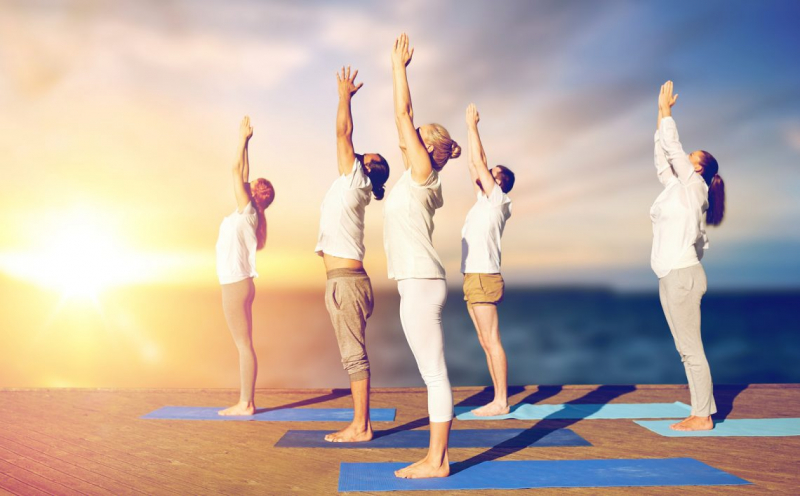
yogafitness 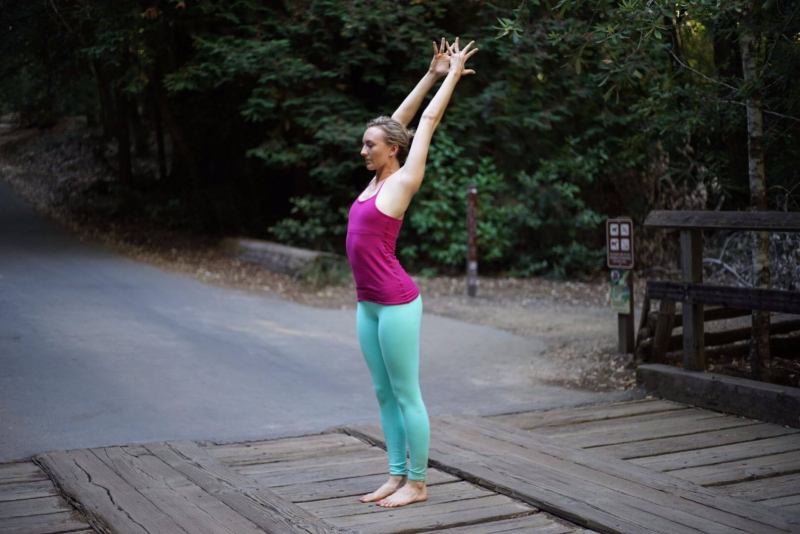
TheHealth -
The Triangle (Trikonasana Pose) can help you maintain your balance while practicing lateral flexion before attempting to lift one foot off the ground. Trikonasana is one of the standing yoga poses to improve your balance and has numerous advantages, such as a full-body stretch, stomach, back, and leg muscle strengthening.
Step your feet wide while still in Mountain Pose. Permit the right foot to splay outward. The right and left heels should be in line. To align the center of the right knee cap with the center of the right ankle, tighten your thighs and turn your right thigh outward. Exhale and bend from the hip joint rather than the waist, extending the body to the right directly over the plane of the right leg. Strengthen the left leg and firmly plant the outside heel on the floor to stabilize this action. While maintaining equal length on both sides, turn the torso to the left and lengthen the tailbone toward the rear heel while allowing the left hip to move slightly forward. Complete for the same period of time on the other side.
Wherever it is possible to do so without twisting the sides of the torso, the right hand can be put on the shin, ankle, block, floor, or outside the right foot. In line with the tops of the shoulders, extend the left arm upward. Keep your head neutral or tilt it to the left while lightly focusing your eyes on your left thumb. Balance and stability while bending at the side of the body can be improved by practicing against a wall. It can also be helpful to get a feeling of the body's alignment and how it is being held.
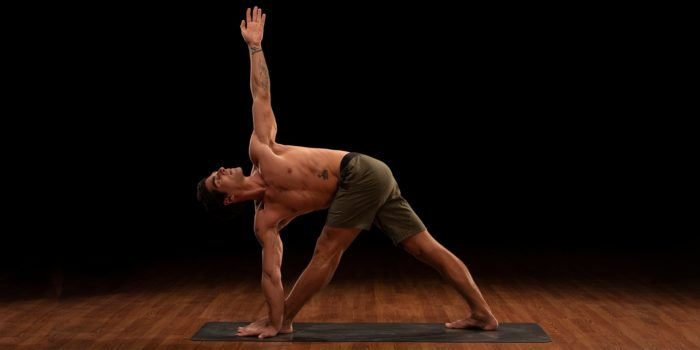
Openfit 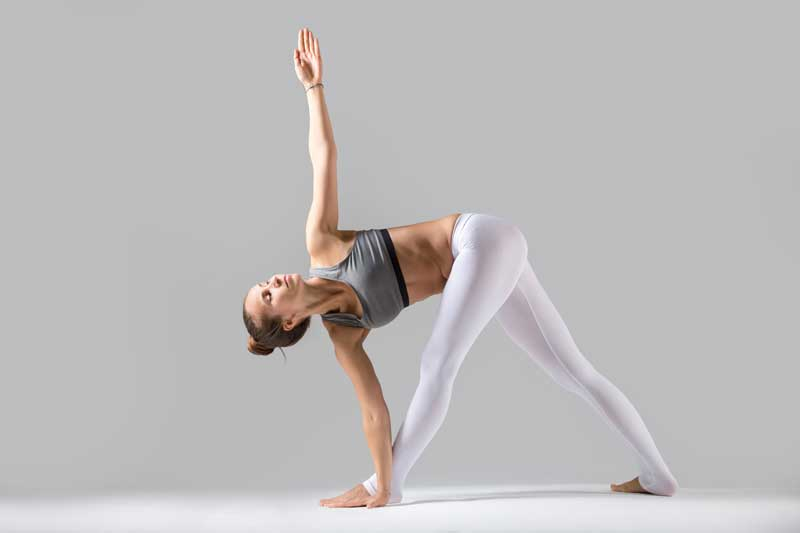
Post Pear -
Ashwa Sanchalanasana (High Lunge Pose), also known as the high lunge, requires more balance to maintain the position. In addition to improving balance, it lengthens the spine, opens the hips and chest, and stretches the legs and groin.
Beginning in mountain position with the hands on the hips, step the right foot back a few steps and press the foot's ball down while lifting the heel. Ankle angulation is not acceptable and should be bent at the front knee. Keep the shoulders above the hips, the heads turned upward, and the legs engaged as if the feet were pressing downward. For better balance, keep your hands on your hips. Otherwise, raise your arms high. Complete for the same length of time on the left side.
To adjust, start a few steps away and practice against a wall. Place the heel of the rear foot against the wall as you take a step back, pressing the ball of the foot firmly into the ground. Start with your hands on your hips but keep lengthening your spine if the shoulders' range of motion is complex.
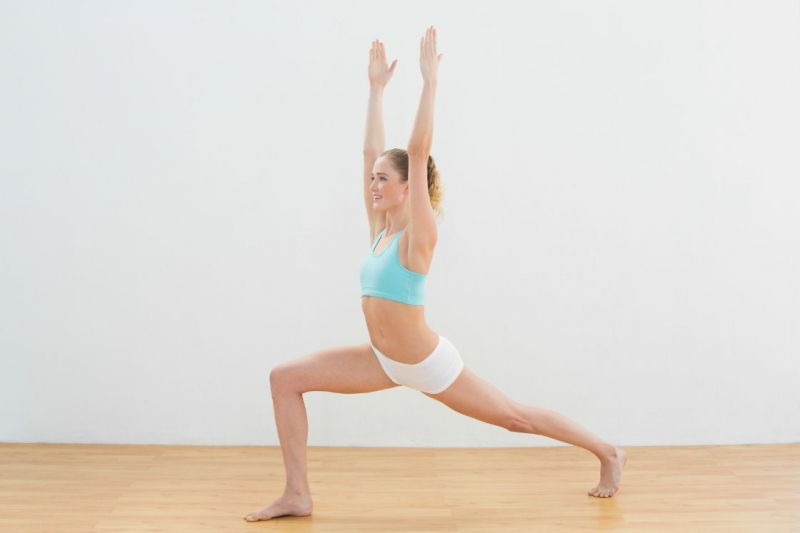
Fitsri 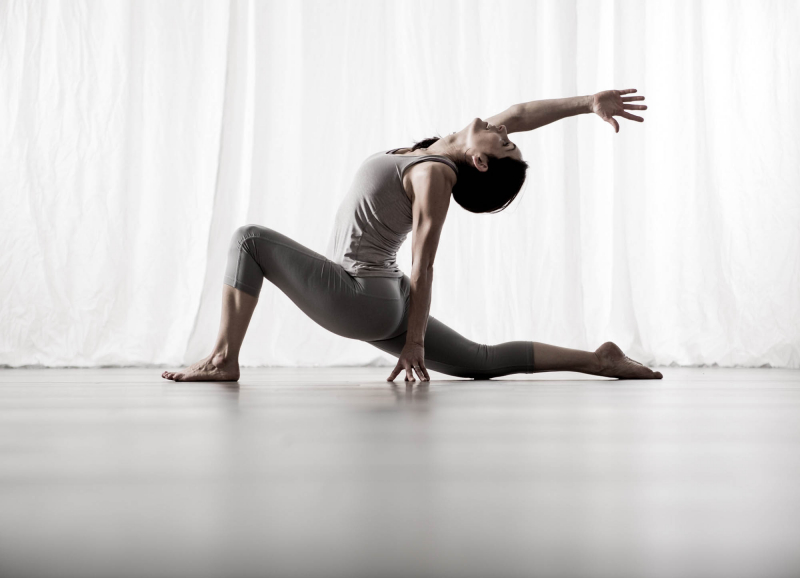
You and the Mat -
One of the standing yoga poses to improve your balance that introduces standing on one leg is the Stork Pose. The stork position, like many others in yoga, aids in mind-focus, centering, and inner calm. The physical benefits of this one-legged stance include strengthening your legs, opening your hips, aligning your feet, and enhancing balance and coordination. In addition to being useful for correcting poor posture, the position gently stretches the muscles in your arms, shoulders, chest, and stomach. A basic yoga position that is suitable for virtually everyone is the stork stance, but if you frequently have vertigo, you should speak with a doctor before trying the activity. It enables the performer to begin elevating the foot while still adhering to all of the mountain pose's fundamentals and starting to balance on one leg.
Allow your weight to shift from one foot to the other in mountain pose. Allow your weight to remain on your right foot, and then lift your entire body upward. Identify a focus point. and maintain a strong core and legs while breathing normally. Lifting the right leg around 90 degrees in front of the torso while keeping the hands on the hips would help. The right foot has a slight flex. The arms can stay on the hips or be raised to the sky. Before repeating on the other side, hold for a breath. Practice this position with the side of the body towards the wall or chair, using each as a support to alter it.
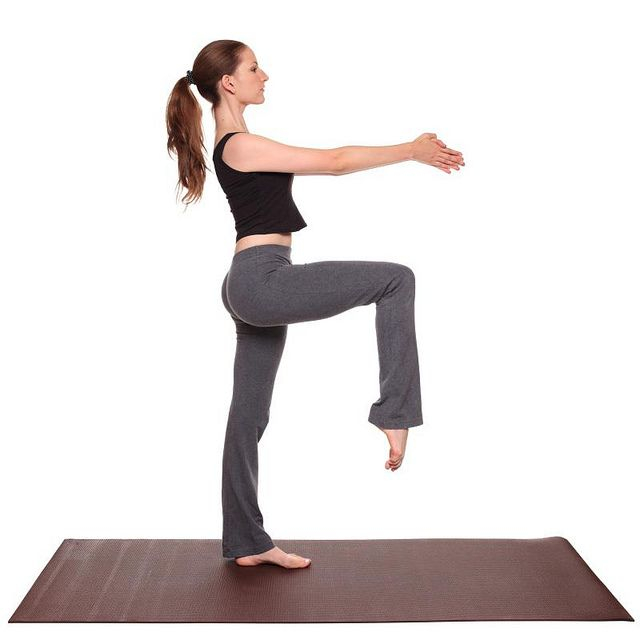
Pinterest 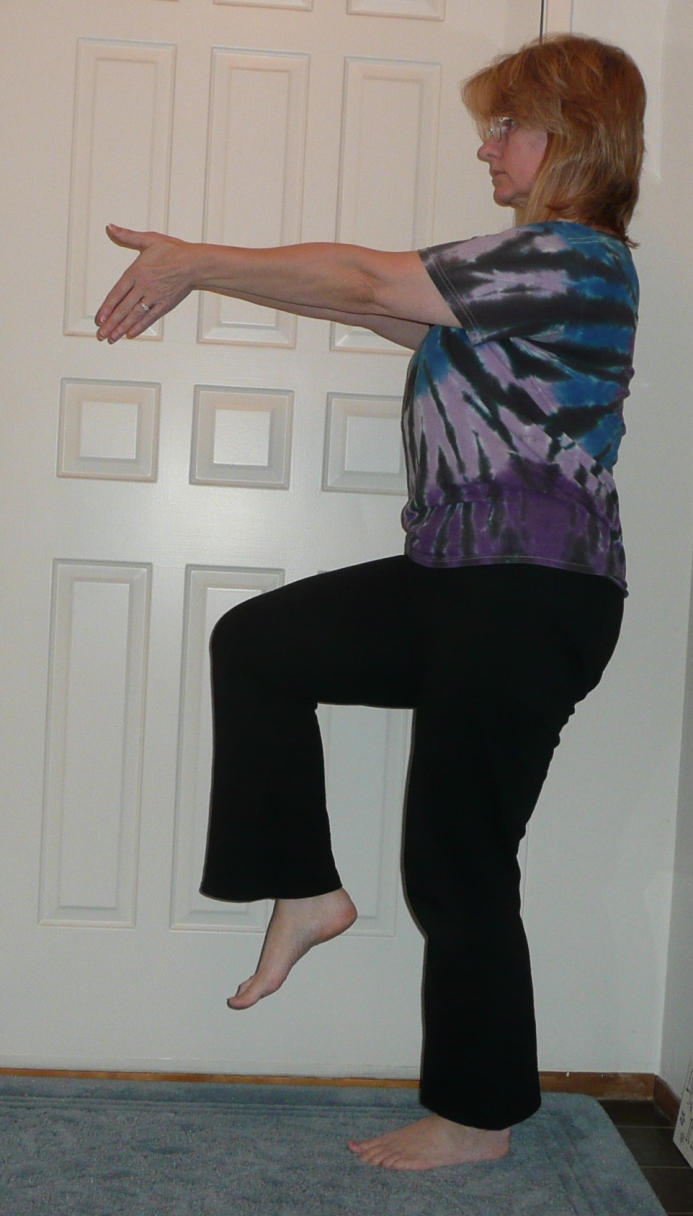
Terre Blog -
While performing this beginner-friendly balancing position, the Tree Pose (Vrksansana Pose) will assist in strengthening the legs and abdominals, opening the hips while stretching the inner thighs and groin area, and is one of the standing yoga poses to improve your balance. Start in mountain posture and raise into stork with your hands on your hips. As you steadily externally twist the right thigh so that the knee begins to point in the direction of the right, keep the hands on the hips and keep the hips aligned both vertically and horizontally. Keep your focus on your hips as you direct your thigh and knee.
Reduce the rotation of the leg if you see the hips drifting out of place. Avoid putting strain on the knees by placing the right foot within the right leg. Hands can be kept on the hips, raised in prayer, or extended upward. Before switching to the left, maintain the position for five to ten breaths. Similar to many balancing postures, practicing next to a chair or a wall can help you stay balanced by using them as support. Reduce the lift of the leg as an alternative. It is acceptable to practice with just the heel lifted while keeping the toes on the ground.
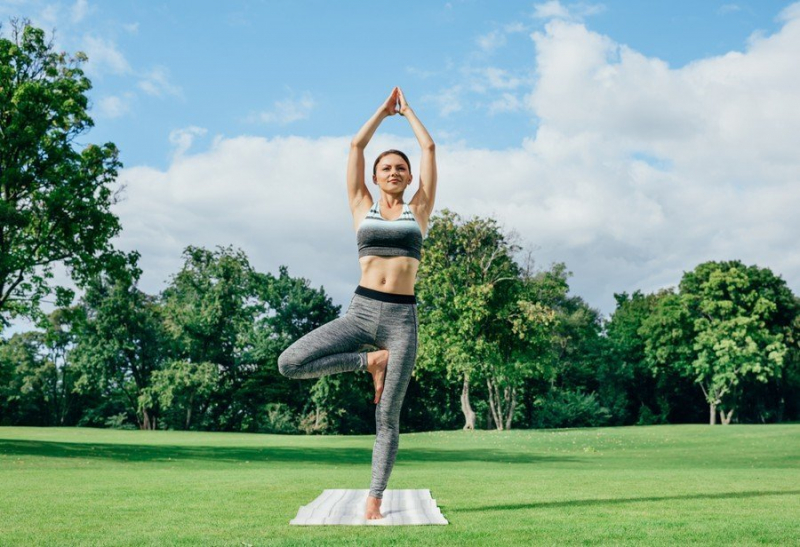
Freedom Genesis 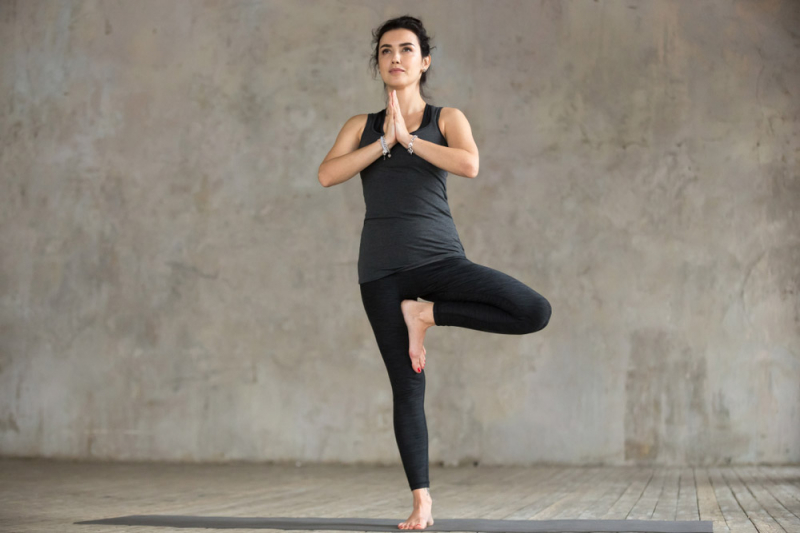
Lessons -
Yoga's difficult balancing pose known as Warrior 3 (Virabhadrasana III) strengthens the legs, shoulders, and back while enhancing posture. Starting in Tadasana, raise your arms overhead, then exhale as you move your torso and arms forward. With the right leg raised straight behind you and aligned with the torso, try to form a T with your body. Engage the standing leg and elevate it while extending your arms, the crown of your head, and lifting your heel outward. Repeat on the other side while holding for several breaths.
If it is simpler to establish your balance to begin from a high lunge. There are various choices for balance in Warrior 3's modifications. You can practice balance while still having some support underneath the hands by placing a chair or some blocks underneath the hands. Simply tuck them under the shoulders to maintain the body's angle. Additionally, you can reach your arms forward and rest your hands against a wall or on top of a chair for support. As you develop balance, using these tweaks can help the body practice some of the posture's strengthening elements.
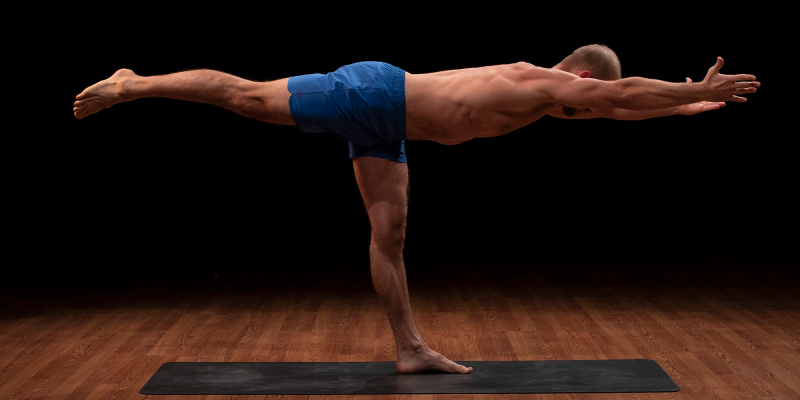
Openfit 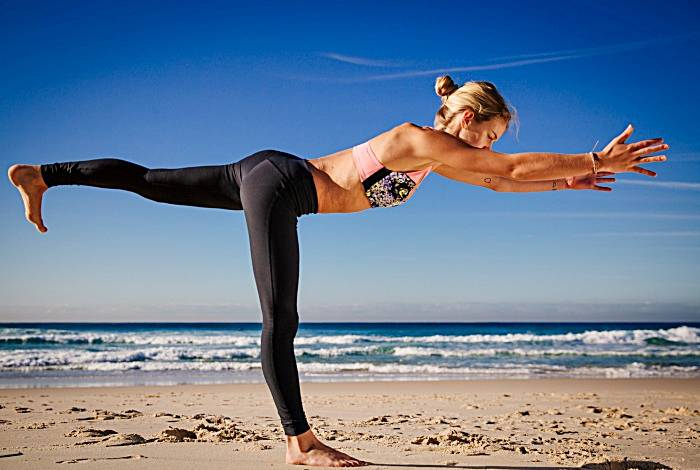
Yoga Journal












